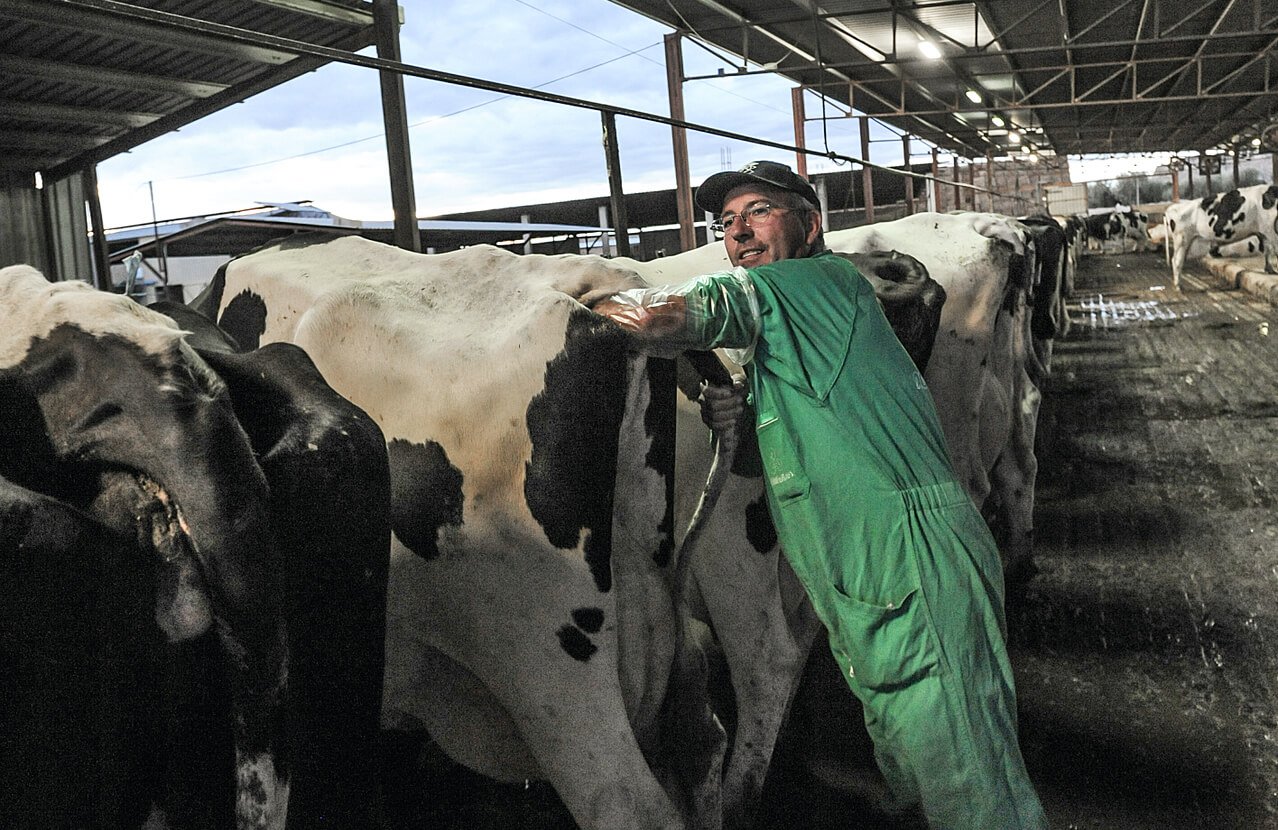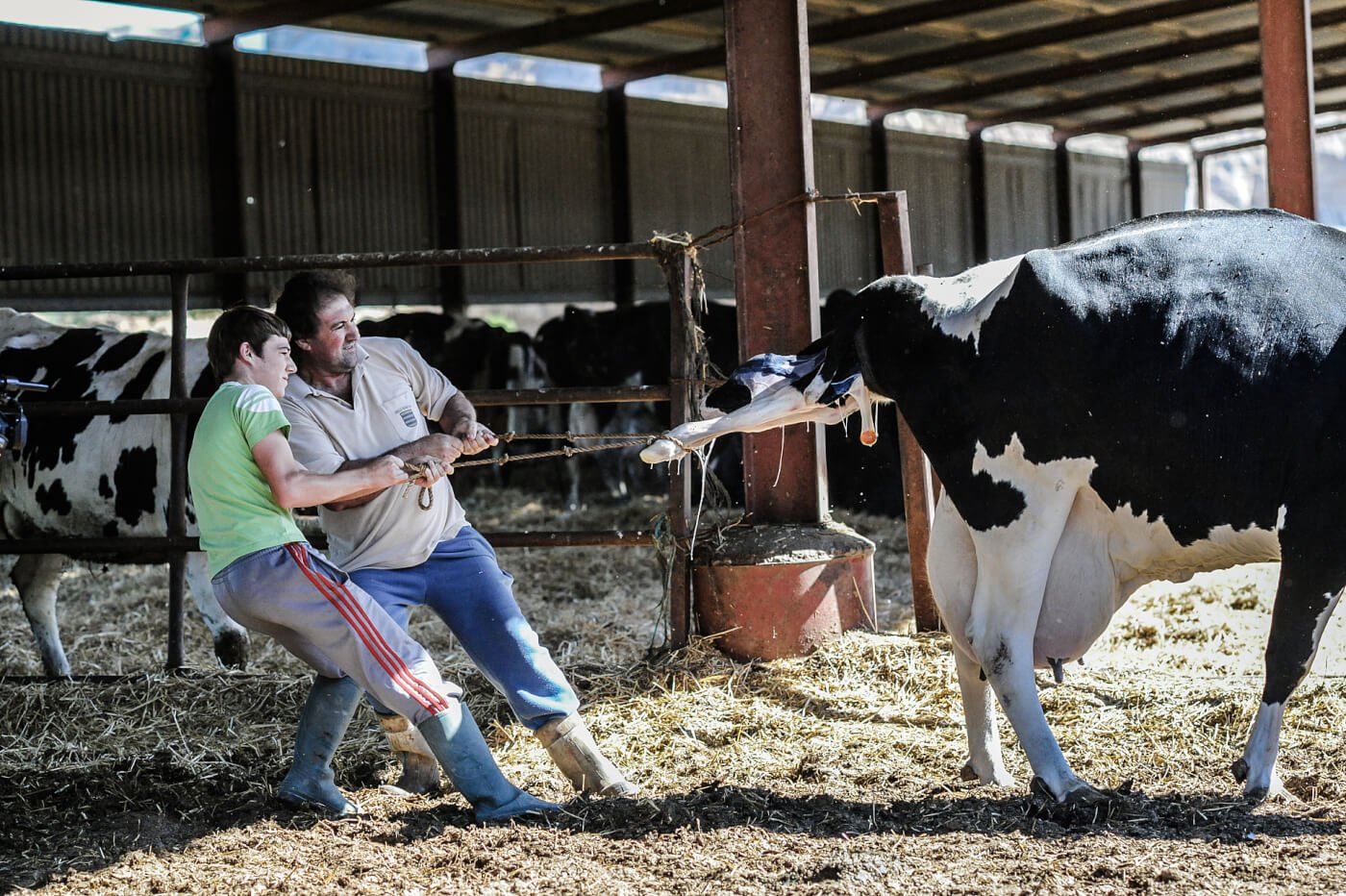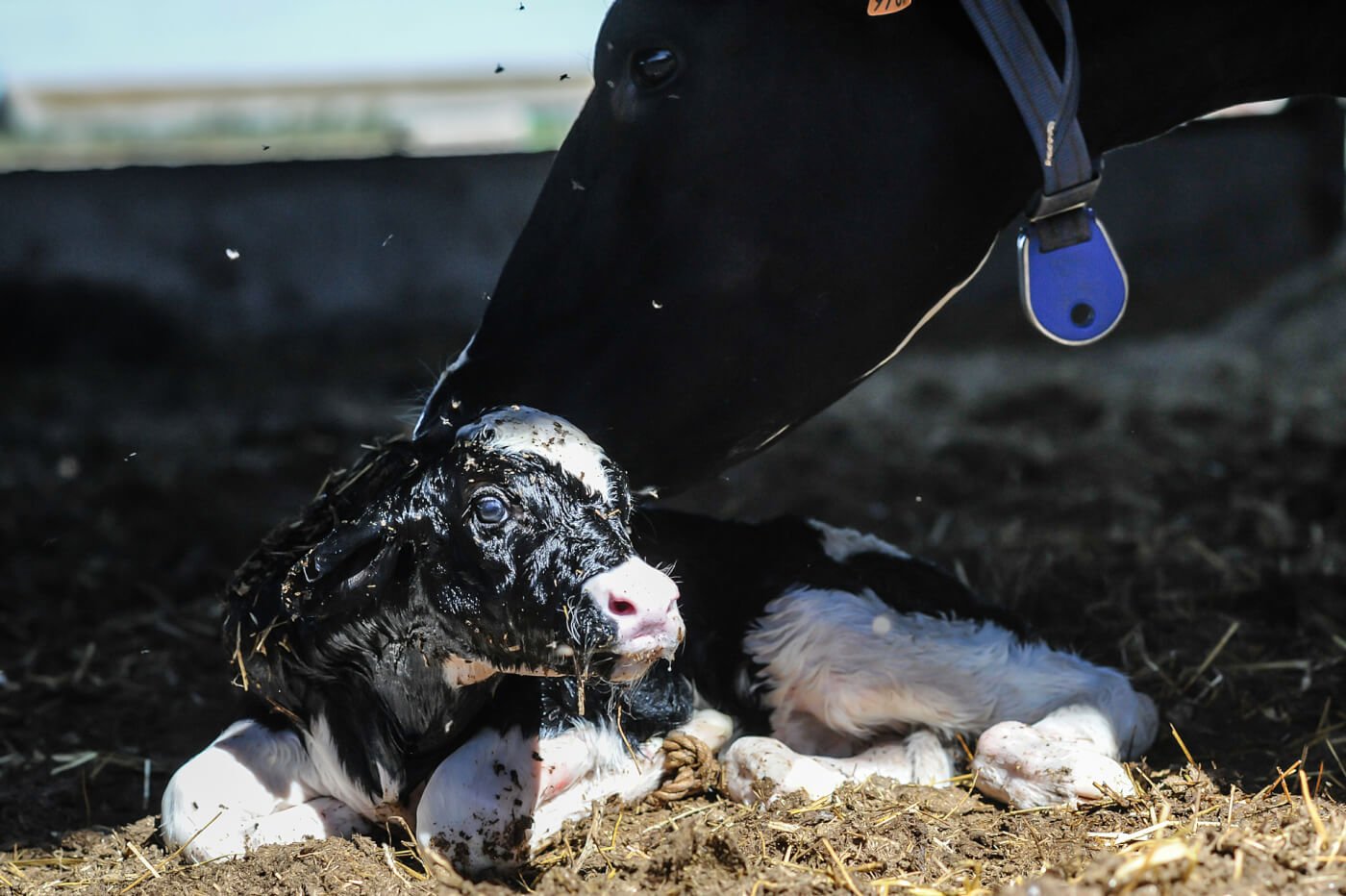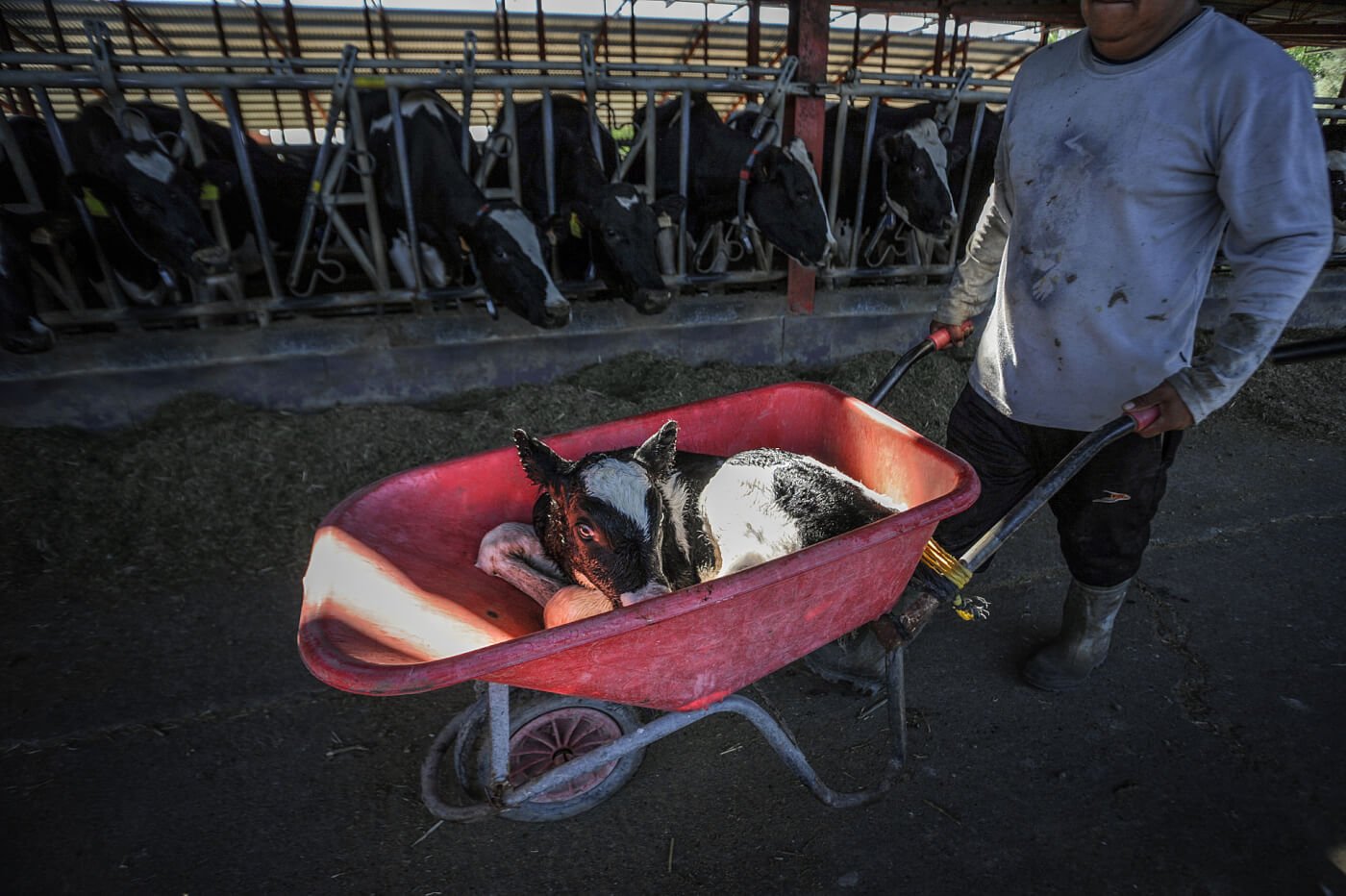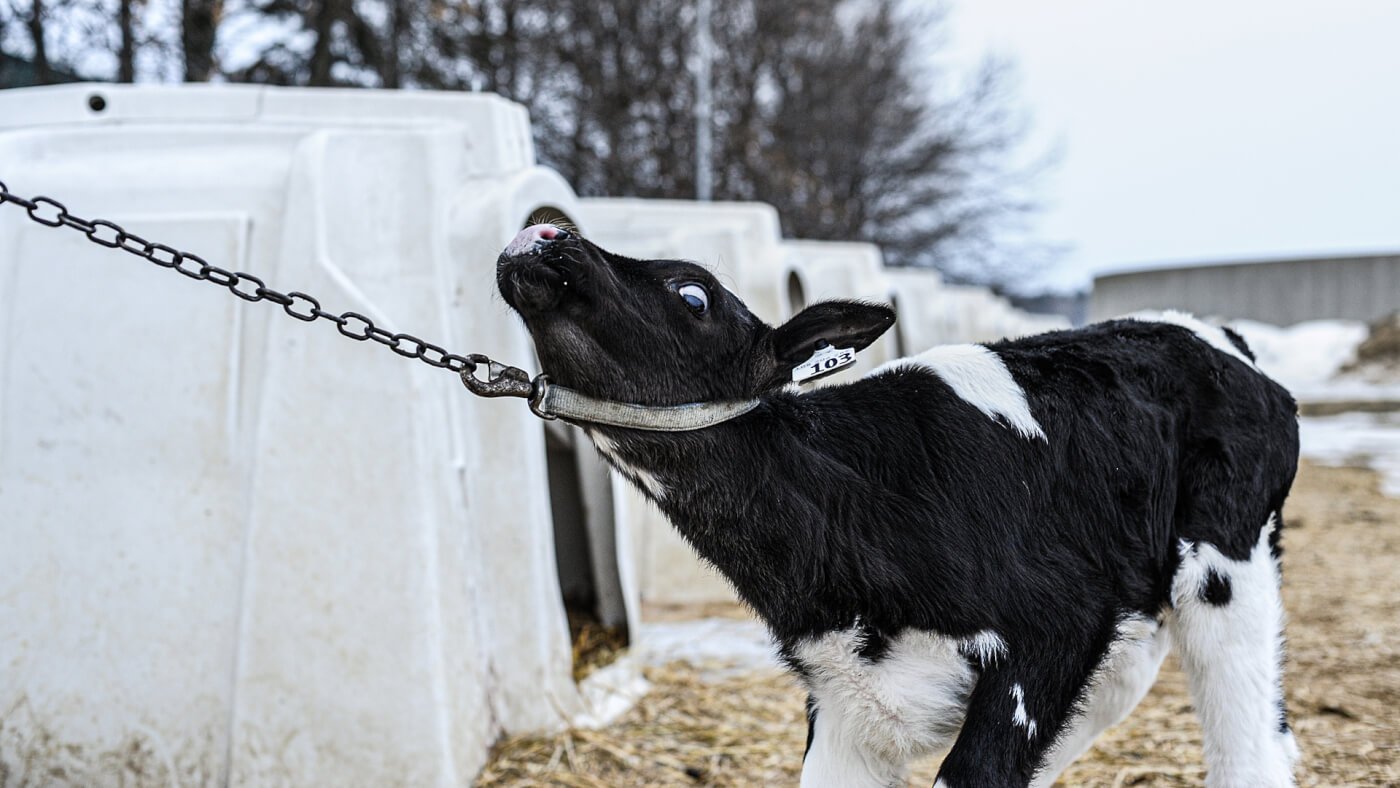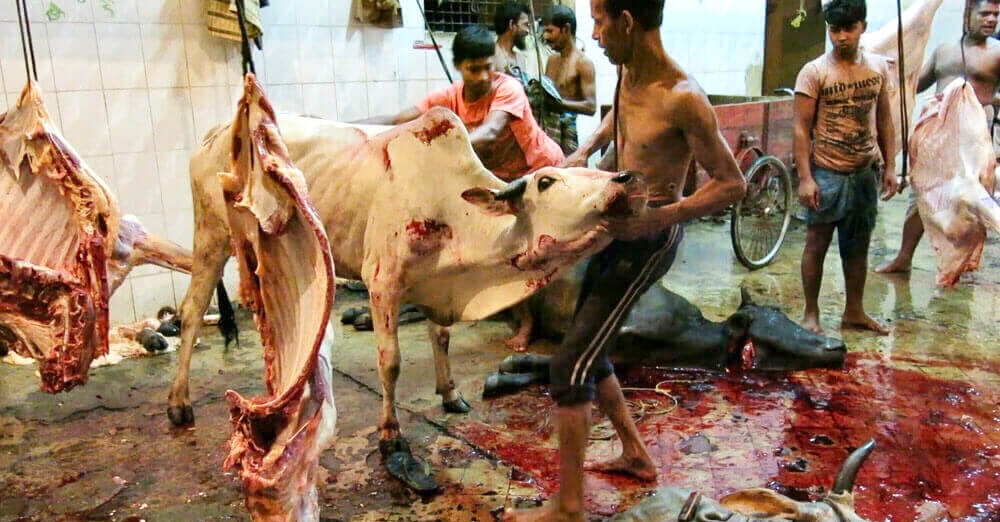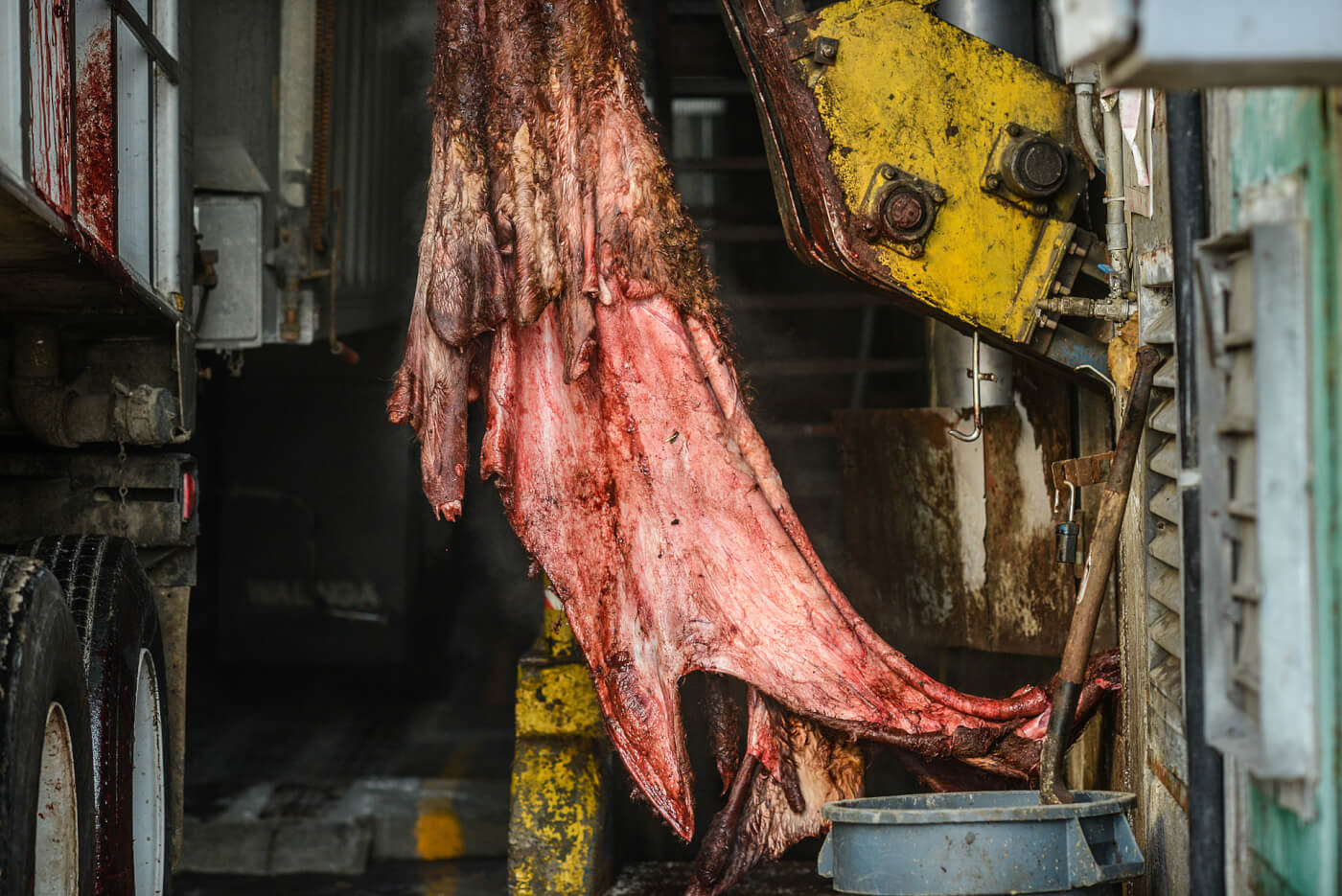Help Stop the Exploitation of Cows for Food and Leather in Just 10 Seconds
Cows are not steaks or pairs of shoes. They’re living beings, just like us.
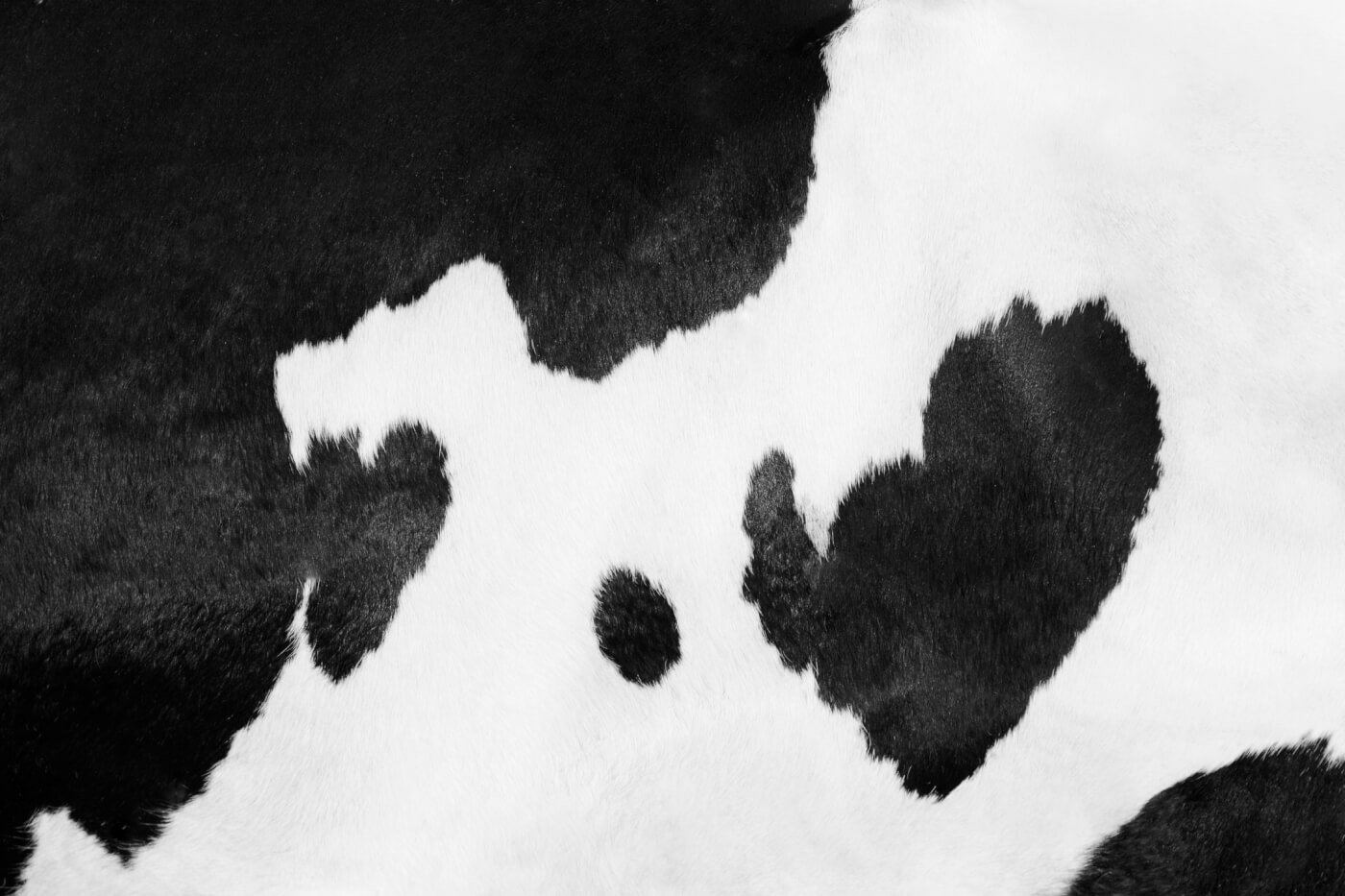
Just like dogs, humans, and all other animals, cows are unique individuals with complex inner lives. They’re intelligent, develop close friendships, hold grudges against other cows who treat them badly, and even mourn the deaths of those they love. Every year, hundreds of millions of cows around the world suffer and die in the meat, dairy, and leather industries, which are killing our planet and destroying our health.
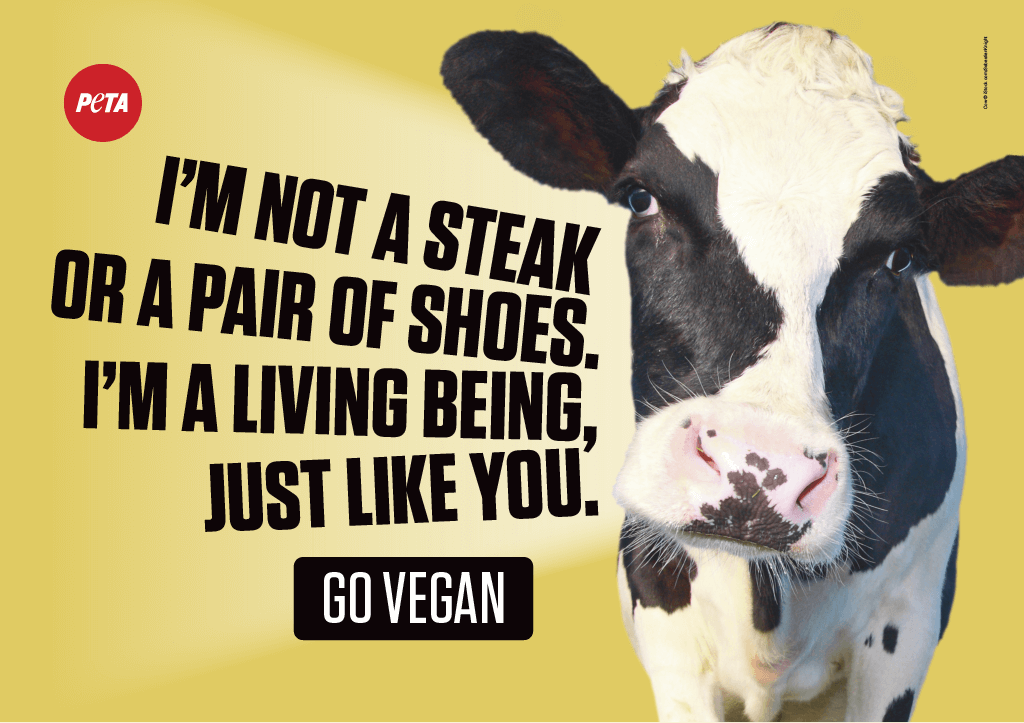
Cows don’t want to end up as meat on your plate, milk in your latte, or shoes on your feet. You can help them today by choosing to eat vegan and wear vegan and by taking action below.
Cows Are Not Hamburgers, Sausages, or Steaks
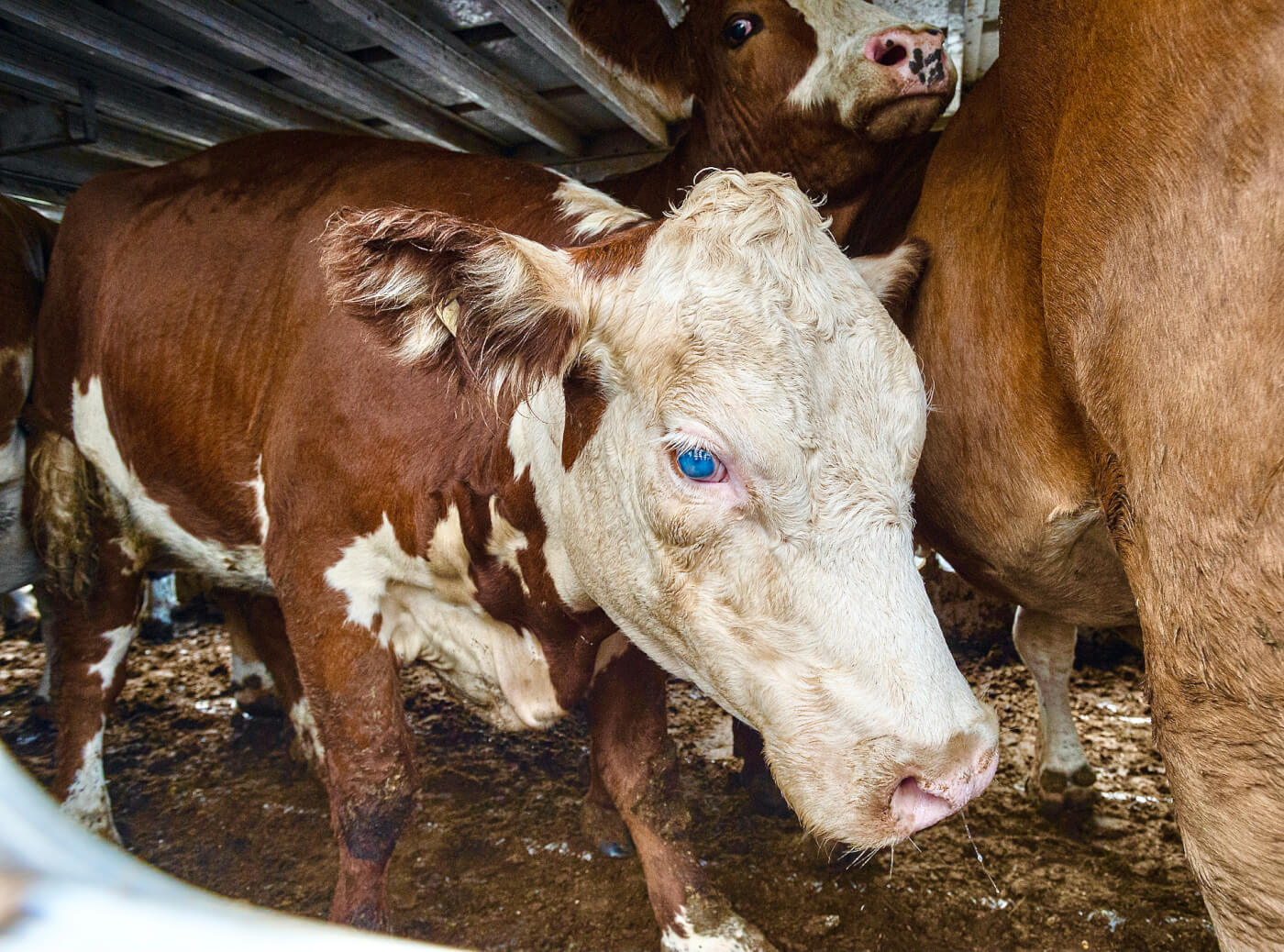
The torment endured by cows raised for meat begins when the animals are still just babies. Farm workers mark cows for identification by pressing hot irons into their flesh, which can cause third-degree burns, as they bellow in pain and attempt to escape their restraints. Workers cut male calves’ testicles from their scrotums or tightly clamp them so that they atrophy and cut or burn off their horns, often without any pain relief. Most cows receive inadequate veterinary care, and many become sick or die from infection and injury as a result.
When cows are about 1 to 2 years old, they’re shipped, sometimes hundreds of miles away, to massive feedlots—feces- and mud-filled holding pens where they’re crammed together by the thousands. This is where they will be fattened for slaughter.
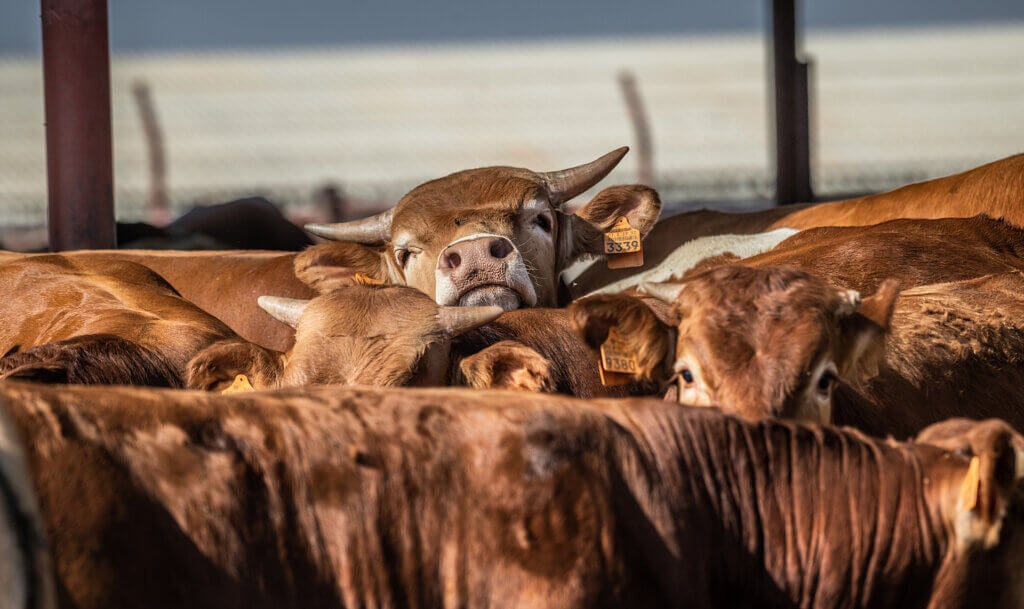 © Jo-Anne McArthur / Israel Against Live Shipments / We Animals Media
© Jo-Anne McArthur / Israel Against Live Shipments / We Animals MediaFascinating fact:
Like a pack of wolves, a herd of cows has a social hierarchy with alpha animals as leaders. Cows choose leaders who have good social skills and who are intelligent, inquisitive, self-confident, and experienced.
Raising thousands of cows at a time on a crowded feedlot disrupts their social hierarchy. Cows on feedlots suffer from constant stress, physical pain, and serious medical conditions. In order to fatten up the animals quickly, workers feed them an unnatural diet of grain and corn. This food can cause their stomachs to become so full of gas—a condition called bloat—that the lungs become compressed, impairing breathing. Some may suffer from a severe increase in stomach acid, causing ulcers and acute acidosis. They’re also constantly forced to inhale ammonia, methane, and other noxious chemicals from the massive amounts of manure that surround them, which can cause chronic respiratory problems that make breathing painful.
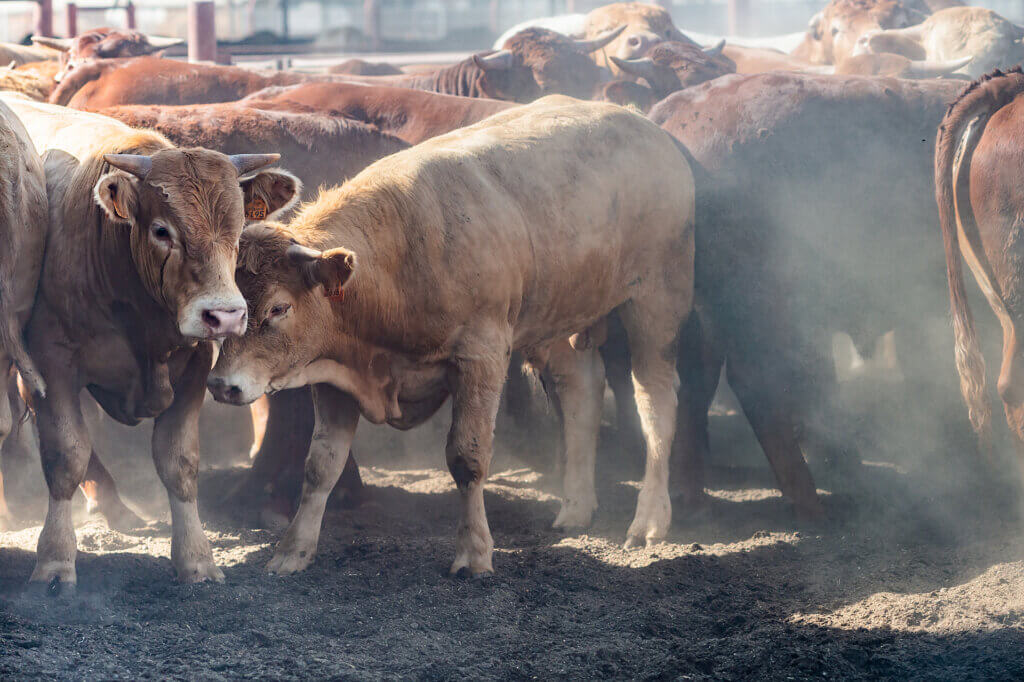 © Jo-Anne McArthur / Israel Against Live Shipments / We Animals Media
© Jo-Anne McArthur / Israel Against Live Shipments / We Animals MediaCows are regularly dosed with antibiotics to make them grow faster and keep them alive even in such miserable conditions. Some of the antibiotics, including penicillin and tetracycline, are also used to treat humans—however, they don’t always work when prescribed, because patients have been exposed to antibiotic-resistant bacteria and low doses of antibiotics by consuming meat, milk, or eggs from animals who were fed the same drugs. According to the Centers for Disease Control and Prevention, 2 million people contract antibiotic-resistant bacterial infections each year and approximately 23,000 die.
You may have heard of “organic” and “free-range” meat. Cows on farms that produce these unethical products often endure the same cruel mutilations—such as dehorning and castration without pain relief—as cows on conventional farms do, and they can still spend much of their time confined to crowded sheds or mud-filled pens. Cows on organic farms aren’t given antibiotics—even when they’re sick—because medicated animals lose their “organic” status. The American Society for Microbiology notes that when “farmers are incentivized to keep their animals antibiotic-free, more animals suffer and die as a result of untreated infections so that the end product can keep the antibiotic-free label … and price.” And while the U.S. Department of Agriculture (USDA) requires animals on “free-range” farms to have access to outdoor areas, it doesn’t specify how much time they must be allowed to spend outside or how much space they should be given.
Cows who survive feedlots—and “organic” and “free-range” farms—face a hellish trip to the slaughterhouse. They’re packed onto trucks, where they typically go without food, water, or rest for the duration of the journey, which can last for days. In hot weather, many cows on a truck collapse. In the cold, they sometimes freeze to the sides of the truck and workers must pry them off with crowbars. Others sustain debilitating broken bones and internal injuries when other animals, fearing for their lives, trample them in an attempt to escape the living hell they’re in. Even after such a grueling trip, it’s common practice for slaughterhouses to keep animals waiting inside the severely crowded trucks for hours.
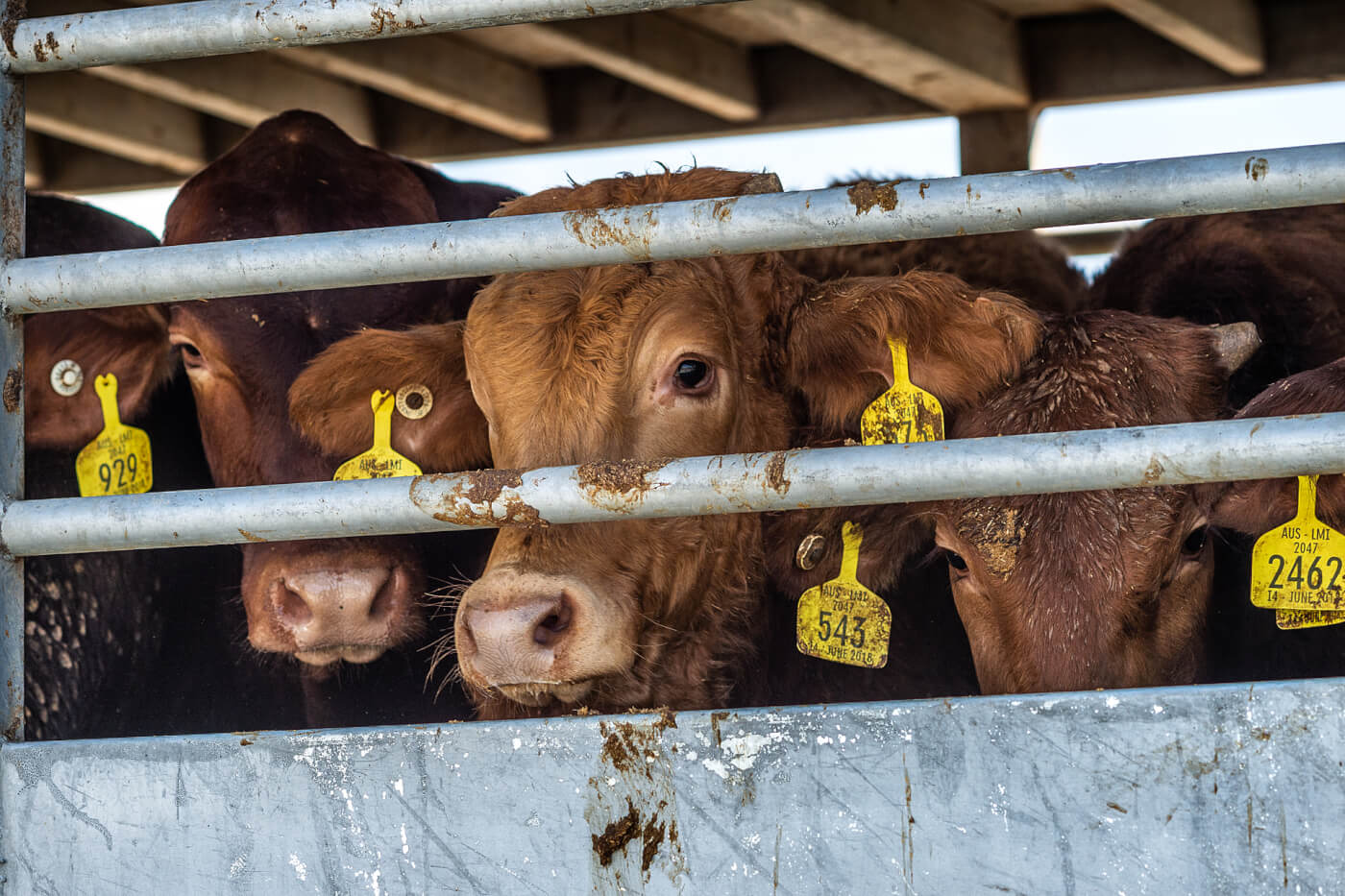 © Jo-Anne McArthur / Israel Against Live Shipments / We Animals Media
© Jo-Anne McArthur / Israel Against Live Shipments / We Animals MediaCows who haven’t already died are then unloaded from the truck, but many are too frightened to leave, so they’re shocked with electric prods or dragged off with chains.
After the cows are off the truck at the slaughterhouse, workers attempt to stun them by shooting them in the head with a captive-bolt gun. Workers then hang them up by one leg, cut their throats, skin them, and gut them. Some cows remain fully conscious throughout the entire process.
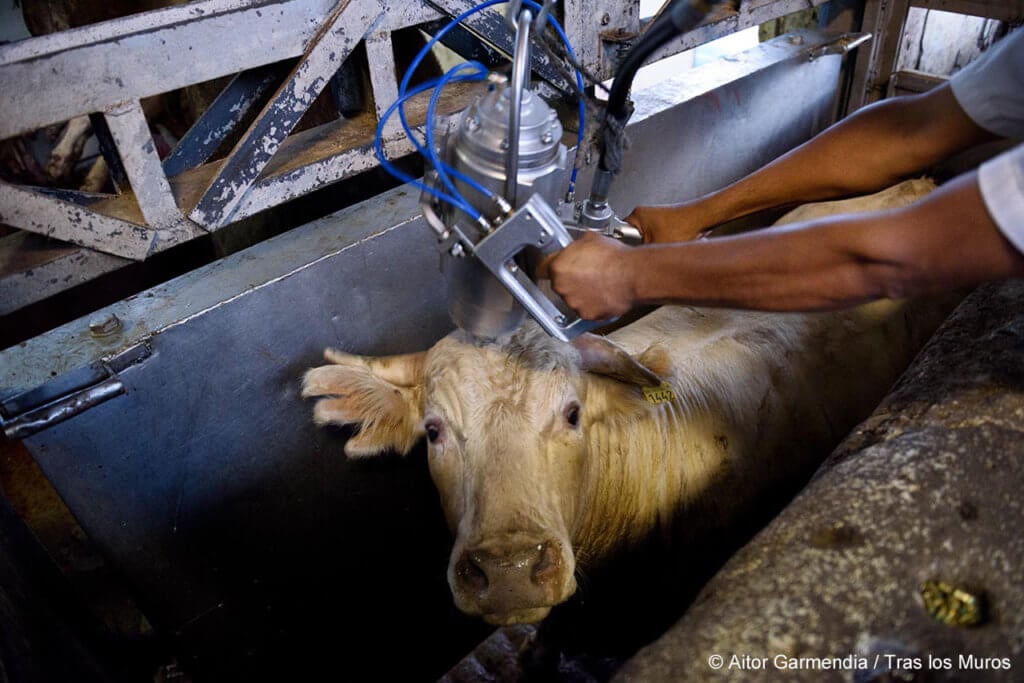
It doesn’t have to be this way. It shouldn’t be this way. There are more vegan meat options available now than ever before! If you’re looking for whole-food, plant-based proteins, we’ve got you covered. Going out to eat? These days, it’s easy to find vegan burgers, pizza, and more at chain restaurants. There’s simply no excuse to continue eating cows or any other animals.
Eating hamburgers, sausages, steak, or any other meat from cows means eating living, feeling beings who didn’t want to die.
Cows Are Not Here to Make Milk for Your Latte or Cheese for Your Pizza
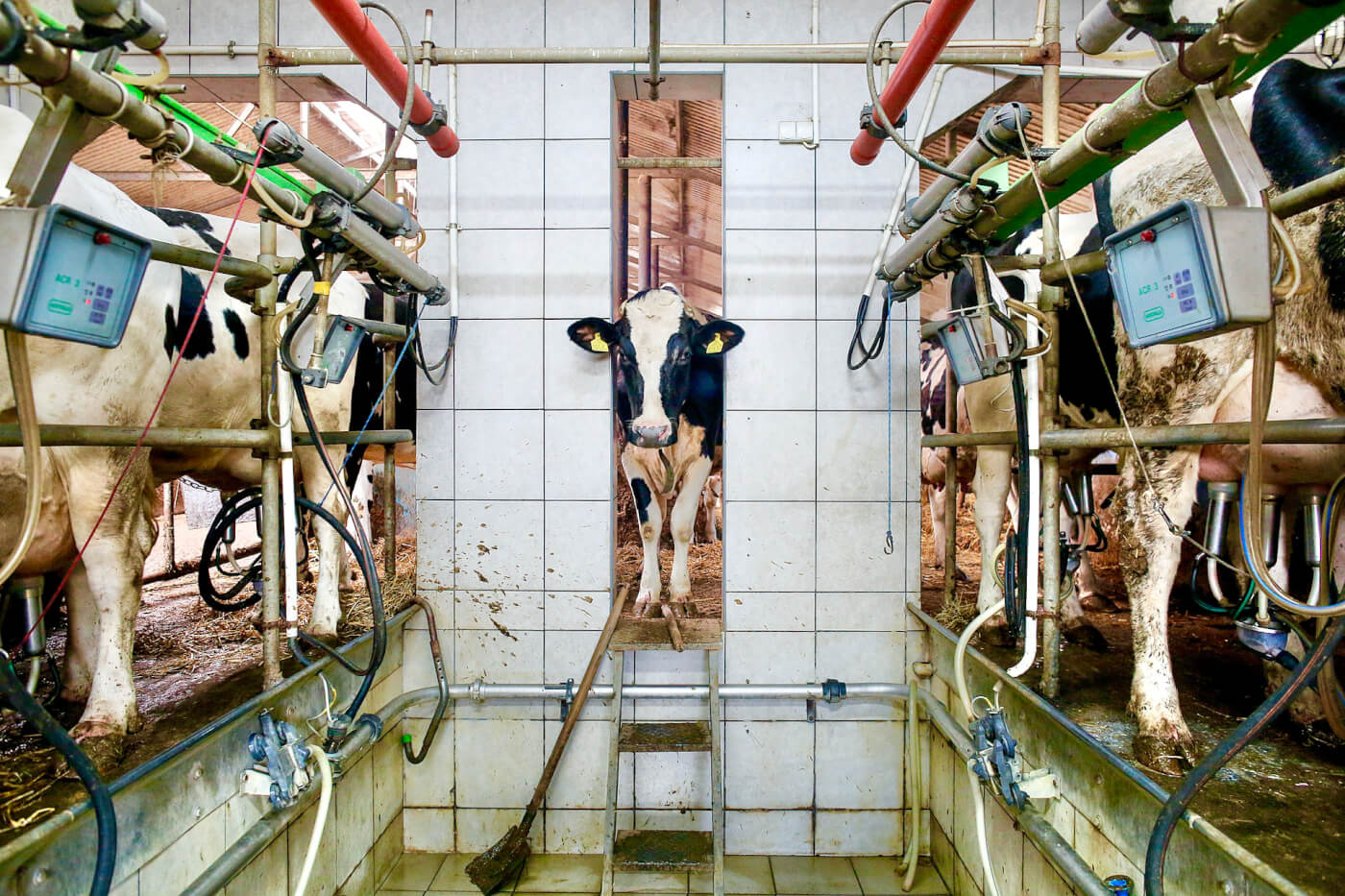
Female cows used for their milk are raped shortly after their first birthday. In order to force them to produce as much milk as possible, farmers typically impregnate them every year using a device that industry insiders have called a “rape rack.” To impregnate a cow, a person jams his or her arm far into the rectum in order to locate and position the uterus, then forces an instrument into the vagina. The cow is restrained and defenseless to stop this violation.
Dairy farmers don’t allow cows—whose pregnancies last for nine months, just like human pregnancies—to spend any time with their calves. As soon as the calves are born, they’re traumatically separated from their mothers, causing them both extreme distress. Mother cows lactate for 10 months, their milk is shipped off for human consumption, and then they’re raped again (to keep the milk constantly flowing), and this cycle of suffering repeats—all so that humans can drink milk meant to feed a calf.
Like animals of all species, cows form strong maternal bonds with their calves. There are countless reports of mother cows who cry out and search frantically for their babies for several days after they’ve been taken away. Cows are intelligent animals with long-lasting memories and the capacity to worry about the future. Some mother cows have even tried to hide their newborns from farmers because they know the calves will be taken away.
While newborn female calves are slaughtered or kept alive to be exploited for their milk just like their mothers, male calves are often confined to cramped stalls for up to 18 weeks, in which they’re raised for veal. They’re denied their mothers’ milk and companionship and forced to live alone or in groups of other distressed calves. In addition to suffering from anemia, diarrhea, pneumonia, and lameness, calves raised for veal are terrified and desperate for their mothers.
Fascinating fact:
Like chimpanzees, cows groom each other not only to stay clean but also to make friends and maintain a peaceful bond with other members of the herd.
On dairy farms, some cows spend their entire lives standing on hard concrete floors. Others are confined to massive, crowded lots, where they’re forced to eat, walk, and sleep in knee-deep feces, resulting in painful infections, swelling, abscesses, diseases, and more. A PETA eyewitness exposé of Reitz Dairy Farm in Pennsylvania revealed that cows were denied care for painful, grapefruit-size masses that oozed blood and pus. One cow was even found lying dead in the manure.
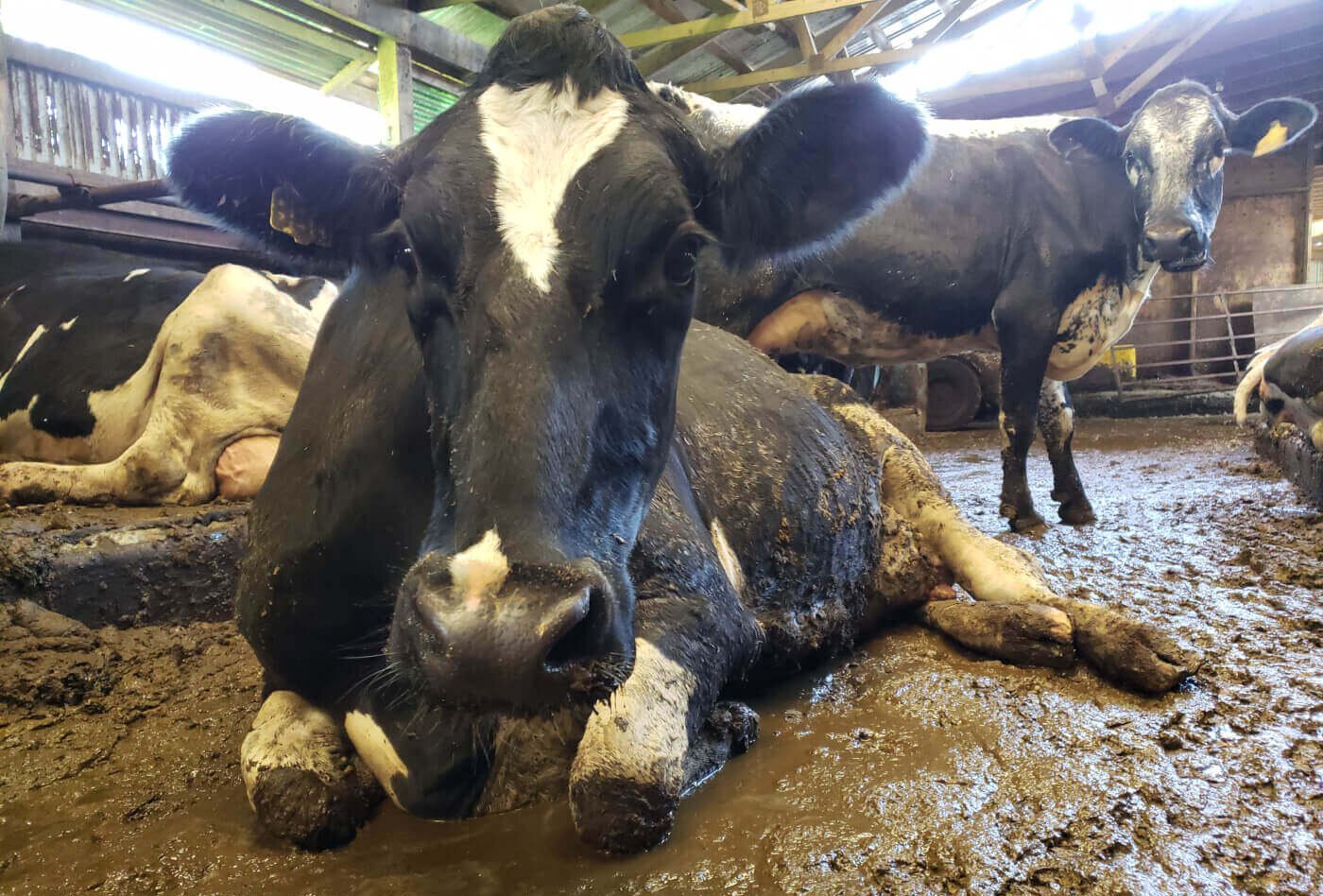
Normally, mother cows would produce only enough milk to meet the needs of their calves—but genetic manipulation, antibiotics, unnatural diets, and hormones cause each cow to produce more than 22,000 pounds of milk every year. In order to produce such a large volume of milk, dairy farmers use an intense milking regime that pushes cows’ reproductive systems to the limit by hooking up millions of gentle mother cows to milking machines two or three times a day.
Udder infections and painful inflammation of the mammary glands, called mastitis, are common among cows used for their milk. These conditions are some of dairy farms’ most frequently cited reasons for sending cows to slaughter. The animals’ bodies produce pus to combat infection, and milk that contains pus cells is legally approved for sale.
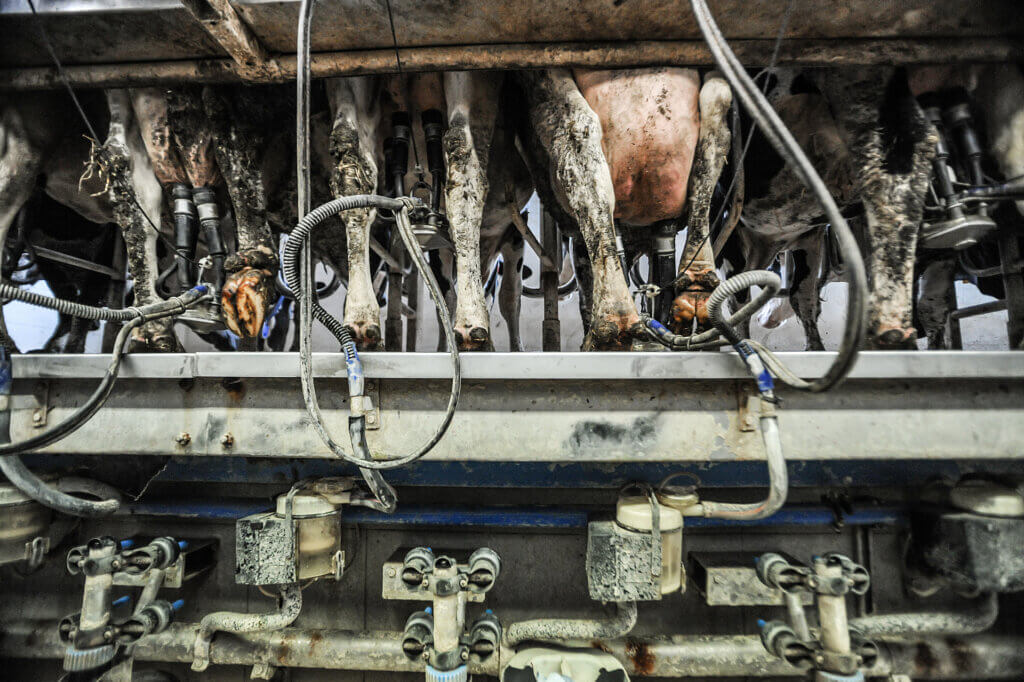 © Jo-Anne McArthur / Animal Equality / We Animals Media
© Jo-Anne McArthur / Animal Equality / We Animals MediaCows can live to be 20 years old and can produce milk until they’re 8 or 9. However, the poor conditions on dairy farms cause severe stress, disease, lameness, and reproductive problems that render cows worthless to the dairy industry by the time they’re 4 or 5 years old—so they’re sent to slaughter at a fraction of their natural life expectancy.
You can help save cows’ lives and improve your health by switching to plant-based milk, cheese, and so on. Delicious dairy-free products can be found at most grocery stores, and you can even make your own plant-based milk and cheese at home.
Consuming cheese, yogurt, or any other products made from cows’ milk means supporting the exploitation and killing of animals who didn’t want to die.
Cows Are Not Bags, Belts, or Shoes
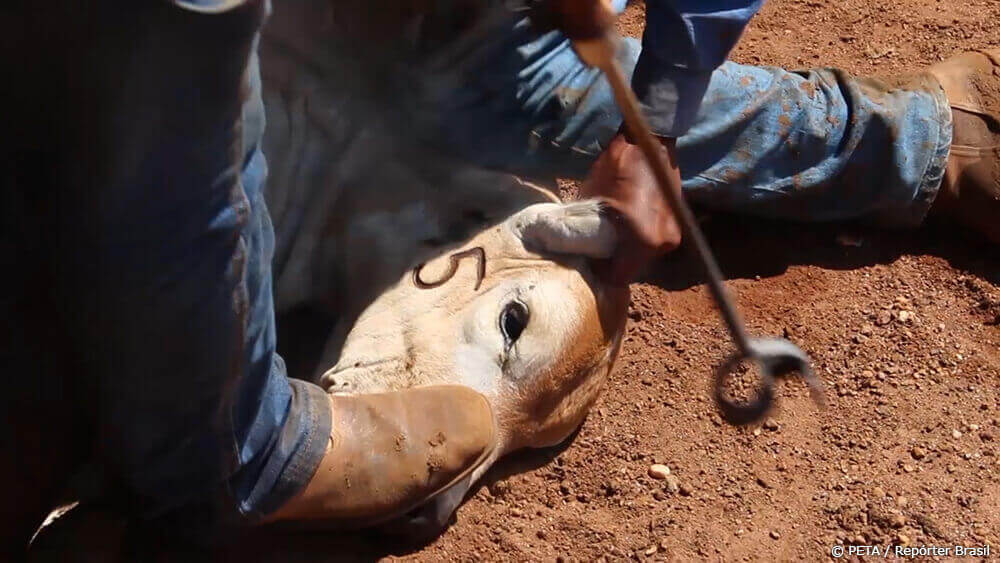
Most leather comes from cows raised in the agriculture industry, because their skin is one of the most profitable products coming out of slaughterhouses. While their flesh is sold as beef and their breastmilk is made into cheese, yogurt, and ice cream, the global leather industry turns their skin into clothes and accessories, such as leather jackets, suede shoes, belts, and handbags. Most cows exploited by this industry begin their lives enduring castration, branding, and tail-docking, all without any pain relief. They face the same horrors as cows on feedlots and dairy farms, including extreme crowding, severe stress, physical ailments, disease, rape, sadness, and loneliness. After all that, they experience more pain and fear in the slaughterhouses where they’re violently killed.
 © PETA / Reporter Brasil
© PETA / Reporter BrasilFascinating fact:
Like humans, cows enjoy intellectual challenges and become excited when they find solutions! They can be taught to operate water pumps with their horns when they’re thirsty and press buttons with their heads to release grain when they’re hungry.
Because of a lack of space and water, animal agriculture is only possible to a limited extent in some countries. That’s why millions of cows exploited for leather are bred in countries like Brazil—where gigantic swaths of rainforest are slashed and burned in order to raise animals and the crops that feed them—then transported around the world to be killed by the highest bidder.
These animals are hauled for hundreds of miles in tightly packed trucks and ships, all while being forced to stand and lie down in their own feces. They’re typically denied sufficient food and water on these grueling journeys. During transport, they jostle each other, causing injuries. If they fall down, they can be trampled to death. The stress of transport results in not only immeasurable suffering but also a heightened risk of disease transmission—some of which can be passed on to humans.
When cows finally reach their destination, some are so weak or injured that they no longer have the strength to stand up. A shocking investigation released by PETA Germany and Manfred Karremann shows cranes hoisting cows from ships by a single leg. Since a full-grown cow weighs over 1,000 lbs., this can cause excruciatingly painful joint dislocations and broken legs.
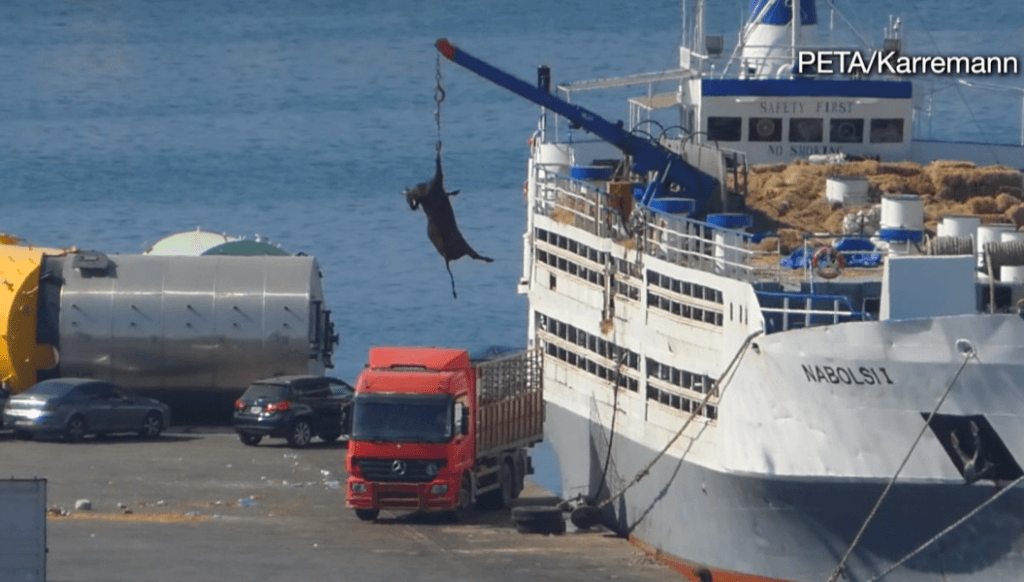
Once inside the slaughterhouse, cows are pushed to the ground and sometimes tied up and their throats are slit. Their deaths are agonizing and can last several minutes.
At least 1.7 billion animals—plus, an additional estimated 2 million cats and dogs—are killed annually in the leather trade. Information regarding the type and origin of the animals whose skin is for sale is often missing from clothing labels and is rarely monitored. Dog and cat leather is often intentionally mislabeled, so you never really know whom (or where) leather came from
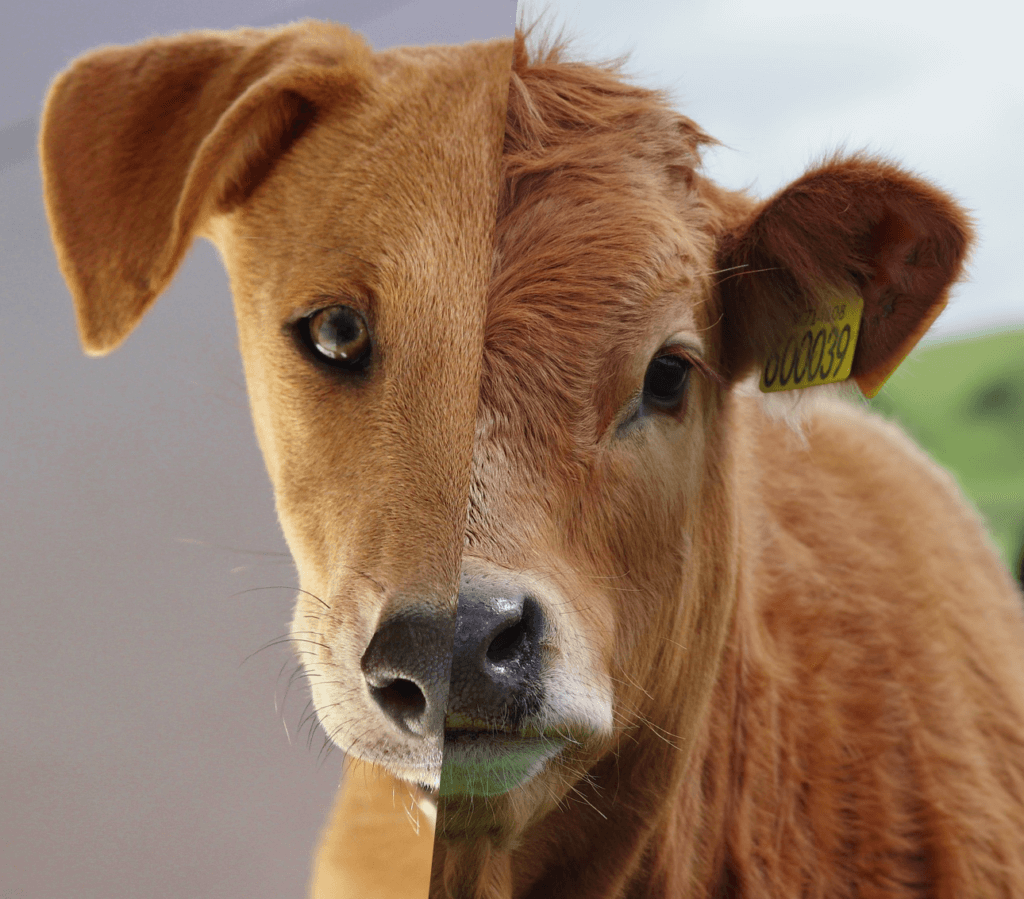
The leather industry not only causes cows to suffer and die but also shares responsibility for the environmental destruction and pollution caused by the meat industry. Every day, rainforests are cleared to raise cows and grow their feed. Cows’ methane emissions contribute tremendously to the climate crisis, and chemicals such as chromium and formaldehyde are used in the toxic tanning process, which poses a danger to both the environment and humans.
That’s why today’s conscientious consumers are switching to vegan leathers made from recycled plastic, plant-based materials, and other animal-free materials. These leathers are fashionable and contribute far less to water pollution, water depletion, and greenhouse gas emissions than leather made from animals’ skin.
Never buy leather, suede, or any other item made from an animal’s stolen skin. Choosing vegan leather products spares cows, the environment, and humans a great deal of suffering.
Wearing leather or suede bags, belts, shoes or any other skin from cows means promoting a cruel industry that profits from animals who didn’t want to die.
Cows Are Living Beings, Just Like You
With every steak you eat, milkshake you drink, or pair of leather shoes you buy, you contribute to the suffering and death of cows. But you can make a compassionate choice today—one that could forever change your life and the lives of nearly 200 other animals every year for the better: Choose to eat vegan meat, switch to plant-based milk and cheese, and wear leather-free shoes, clothing, and accessories.
You can take action now for cows used for meat, dairy, and leather. Use the form below to urge multiple companies at once to stop exploiting cows and tell others to offer more vegan options.
As soon as you take one action below, another will appear in its place. After you enter your information, just keep clicking “Send Message” to make sure that your voice is heard. Once you’ve taken every action, share this page with your friends and family members. Encourage them to add their voices to help cows who are being abused and killed every single day.
